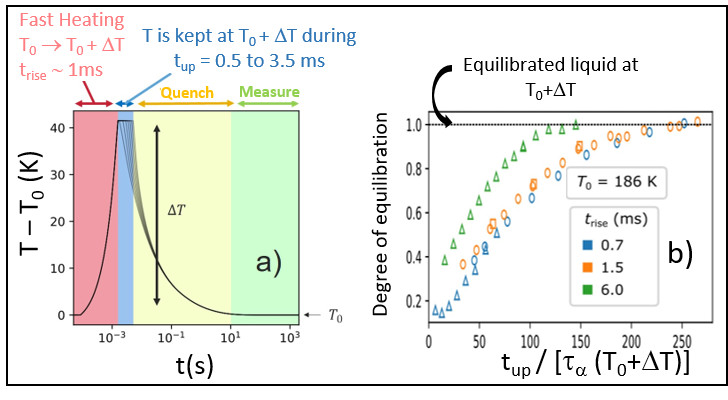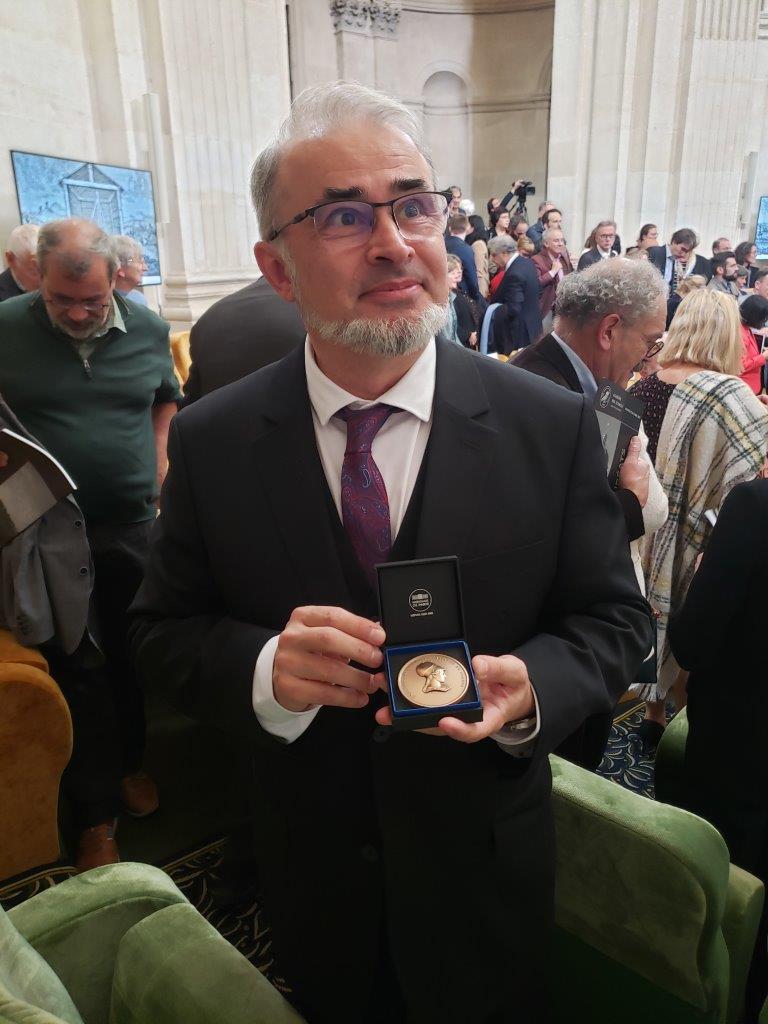Glasses are everywhere in our daily life, from ordinary windowpanes to granular materials. What unifies them is their elusive nature: they are not crystalline solids, yet they hardly flow. Whether they are merely hyper-viscous liquids or form an intrinsic state of matter largely remain open issue. To shed light on this fundamental question, we have brought our experiments into dialogue with glass state theories. Starting from theoretical predictions:
- our nonlinear measurement experiments[1] revealed that the Gardner transition is not present in an archetypal structural glass –glycerol-. This is an important qualitative difference from the case of glassy colloids and granular glasses, where this Gardner transition has been demonstrated.
- we have built a new experiment showing the feasibility[2] of random pinning experiments where a very small fraction of molecules are immobilized in order to find out whether -or not- this strongly slows down the global glassy dynamics near Tg. Indeed, such an experiment is discriminating between opposing theories of the glassy state.
Conversely, our experiments have explored regimes where theories do not yet exist, due to the lack of experimental indications:
- our aging experiments[3] under extreme solicitation (1000 times more brutal than the state of the art) reveal an unexpected time scale -cf fig. 1- ;
- as do our high-pressure measurements, which show non-monotonic behavior of the stretching exponent at the highest pressures[4].
- last, glass forming compressed[5] ionic liquids showed a decrease of the activation volume for increasing isothermal compressibility.

a) A glassformer, initially equilibrated at T0, is suddenly heated, within trise ~ 1ms, at T0+DT (with DT ~ 40K) where the dynamics is 108 times faster. b) Subsequent aging reveals that, in this protocol, equilibration at T0+DT is 100 times longer than naively expected.
[1] S. Albert, et al. ‘Searching for the Gardner Transition in Glassy Glycerol’, Phys. Rev. Lett., 126, 028001, (2021).
[2] P. Datin, ‘Manipulation optique de molcules près de la transition vitreuse’, thèse de doctorat, Univ. Paris Saclay, (2019) ; E. Dzik, et al. ‘Simultaneously measuring the dichroism and the dielectric response of an azobenzene-doped organic glass former’, Rev. Sci. Instr., 94, 123904 (2023).
[3] M. Hénot, F. Ladieu, Non-linear physical aging of supercooled glycerol induced by large upward ideal temperature steps monitored through cooling experiments, J. Chem. Phys, 158 (22), 224504 (2023)
[4] M. Bonetti, et al., Isochronal superpositioning in the equilibrium regime of superpressed propylene carbonate to ∼ 1.8 GPa: A study by diffusivity measurement of the fluorescent probe Coumarin , Eur. Phys. J. E, 42, 97, (2019) ;
[5] M. Bonetti, Relationship between glass-transition pressure of pressurized homologous imidazolium-based ionic liquids and internal pressure from activation volume measurements, J. Molecular Liquids 390, 123117 (2023)

Marco BONETTI
CEA researcher

Marceau HENOT
CEA researcher

François LADIEU
CEA researcher

Caroline RAEPSAET
CEA researcher



